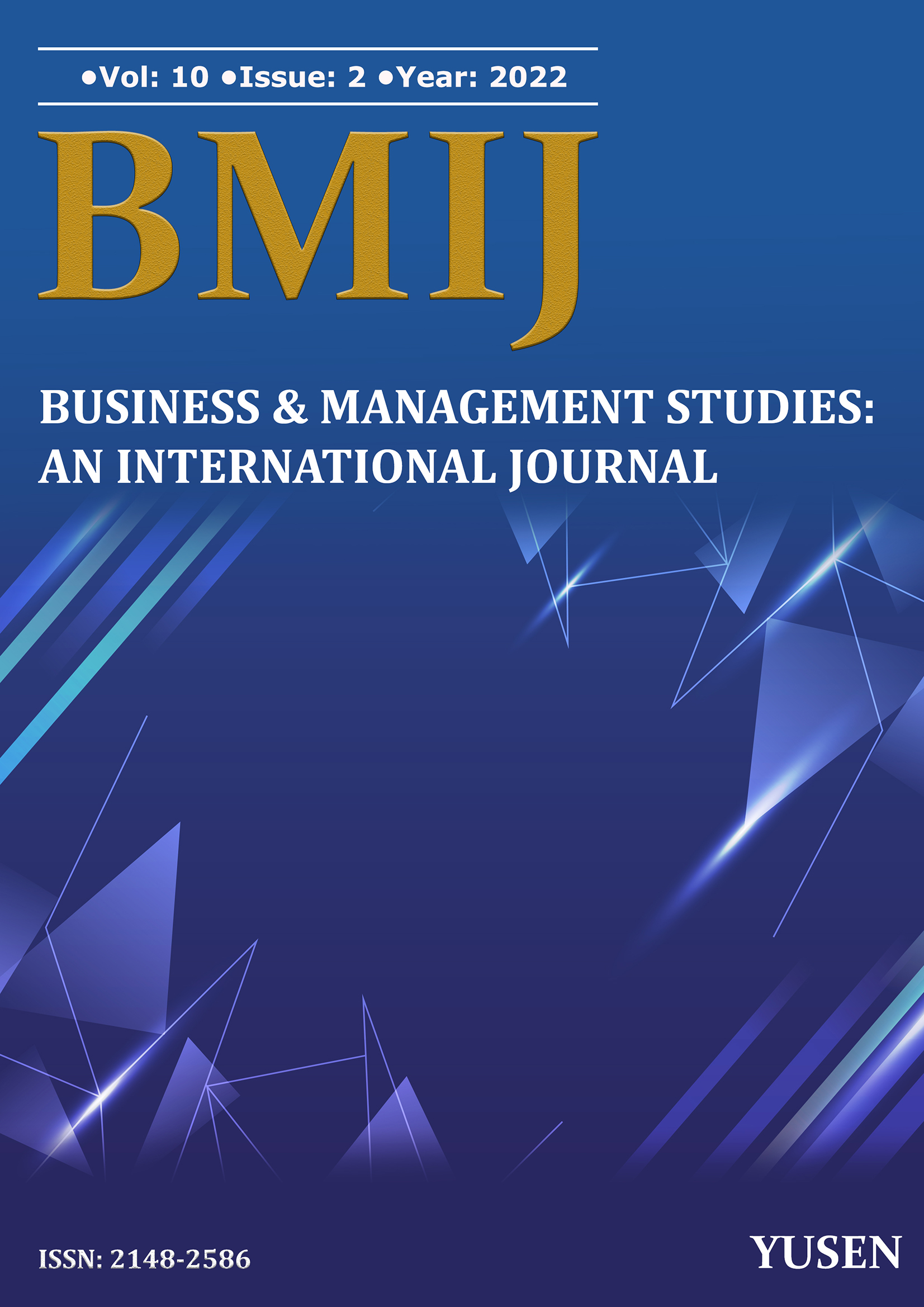BIST100 endeksi getiri volatilite modellemesinde standart ve kartiller arası değişim genişliğinin önemi: Koşullu otoregresif değişim genişliği (KODG) modelleri

Yayınlanmış 25.06.2022
Anahtar Kelimeler
- KODGM, Volatilite, BIST100 Endeksi, Kaldıraç Etkisi, Aşırı Değerler
- CARR Models, Volatility, BIST100 Index, Leverage Effect, Extreme Values
Nasıl Atıf Yapılır
Telif Hakkı (c) 2022 Engin BEKAR

Bu çalışma Creative Commons Attribution-NonCommercial-NoDerivatives 4.0 International License ile lisanslanmıştır.
Nasıl Atıf Yapılır
Öz
Finansal yatırım kararı alınırken ve risk yönetimi kapsamında politikalar belirlenirken göz önünde bulundurulması gereken en önemli kavram “risk” kavramıdır. Gelecekte karşılaşılabilecek farklı risk düzeylerinin uygun yöntemle öngörülmesi, bu risklere karşı hazırlıklı olunması ve doğru kararlar alınması açısından büyük öneme sahiptir. Doğru öngörülerde bulunabilmek ise ancak, istatistiksel performansı en yüksek modellerin belirlenmesiyle münkündür. Çalışmada, 3 Ocak 2011 – 24 Temmuz 2020 dönemi BIST100 endeksi haftalık verilerine dayalı olarak endeks getiri volatilitesi tahminlerini elde etmek ve istatistiksel performansı en yüksek modeli belirlemek amacıyla simetrik ve asimetrik modeller arasından seçilen getiri bazlı “ARCH (1) Modeli” ve değişim genişliği bazlı “Koşullu Otoregresif Değişim Genişliği Modelleri (KODGM)” tahmin edilmiştir. Yapılan değerlendirmeler sonucunda, BIST100 getiri volatilitesi tahmininde kullanılabilecek en uygun modelin, hataların Weibull dağılımı izlediği, kaldıraç etkisinin dikkate alındığı ve aşırı değerlere karşı dirençli olan “Kartiller Arası Değişim Genişliği” ölçüsüne dayalı olarak tahmin edilen “WKODGX (1,1) Modeli” olduğu tespit edilmiştir. Tüm bulgular birlikte değerlendirildiğinde, değişim genişliği bazlı modellerin, BIST100 endeks getirisi volatilite modellemesinde istatistiksel performansı belirgin bir biçimde iyileştirdiği sonucuna varılmıştır.
Referanslar
- Alizadeh, S., Brandt, M.W. & Diebold, F.X. (2002). Range-Based Estimation of Stochastic Volatility Models. The Journal of Finance, 57 (3), 1047 – 1091.
- Brooks, C. (2008). Introductory Econometrics for Finance. Second Edition. Cambridge University Press.
- Büberkökü, Ö. & Kızıldere, C. (2017). BIST100 Endeksinin Volatilite Özelliklerinin İncelenmesi. V. International Conference in Economics.
- Büberkökü, Ö. (2019). Asimetrik Stokastik Volatilite Modelinin BIST100 Endeksine Uygulanması. Iğdır Üniversitesi Sosyal Bilimler Dergisi, 18, 503 – 525.
- Chou, R. Y. (2005). Forecasting Volatilities with Extreme Values: The Conditional Autoregressive Range (CARR) Model. Journal of Money, Credit and Banking, 37 (3), 561 – 582.
- Chou, R.Y. & Wang D. (2006). Using Conditional Autoregressive Range Model to Forecast Volatility of the Stock Indices. Advances in Intelligent Systems Research.
- Engle, R. F. (1982). Autoregressive Conditional Heteroscedasticity with Estimates of the Variance of United Kingdom Inflation. Econometrica, 50 (4), 987 – 1007.
- Er, Ş. & Fidan, N. (2013). Modeling Istanbul Stock Exchange-100 Daily Stock Returns: A Nonparametric Garch Approach . Journal of Business Economics and Finance, 2 (1), 36-50.
- Göktaş, Ö. & Hepsağ, A. (2016). BIST100 Endeksinin Volatilite Davranışlarının Simetrik ve Asimetrik Stokastik Volatilite Modelleri ile Analizi. Ekonomik Yaklaşım, 27 (99), 1 – 15.
- Jun, Z. W. & Yuan, G.M. (2014). Using CARR Model and GARCH Model to Forecast Volatility of the Stock Index: Evidence from China’s Shanghai Stock Market. International Conference on Management Science & Engineering, 1106 – 1112.
- Karabacak, M., Meçik, O. & Genç, E. (2014). Koşullu Değişen Varyans Modelleri ile BIST100 Endeks Getirisi ve Altın Getiri Serisi Volatilitesinin Tahmini. Uluslararası Alanya İşletme Fakültesi Dergisi, 6 (1), 79 – 90.
- Kumar, D. (2018). Volatility Prediction: A Study with Structural Breaks. Theoretical Economics Letters, 8, 1218 – 1231.
- Kuzu, S. (2018). Borsa İstanbul Endeksi (BIST100) Getiri Volatilitesinin ARCH ve GARCH Modeli ile Tahmin Edilmesi. Muhasebe ve Vergi Uygulamaları Dergisi, 608 -624.
- Maciel, L. S. & Ballini, R. (2017). Value-at-Risk Modeling and Forecasting with Range – Based Volatility Models: Empirical Evidence. Revista Contabilidade & Finanças, 28 (75), 361 – 376.
- Pabuçcu, H. & Değirmenci, N. (2018). Volatilitenin Modellenmesi ve ANFIS Model ile BIST100 Getiri Tahmini. Adam Akademi, 8 (2), 325 – 345.
- Parkinson, M. (1980). The Extreme Value Method for Estimating the Variance of the Rate of Return. The Journal of Business, 53 (1), 61 – 65.
- Turnacigil, S. (2021). BIST100 Endeks Volatilitesinin COVİD-19 ve 2008 Küresel Finansal Kriz Dönemleri Karşılaştırmalı Analizi. Aksaray Üniversitesi İktisadi ve İdari Bilimler Fakültesi Dergisi, 13 (2), 59 – 68.



